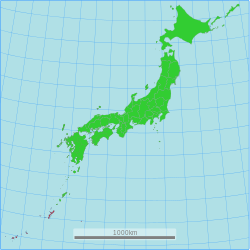– Geography and Demographics:
– Okinawa Prefecture is the southernmost and westernmost prefecture of Japan.
– Population: 1,457,162 (as of February 2020).
– Geographic area: 2,281 km² (880 sq mi).
– Capital and largest city: Naha, with other major cities like Okinawa, Uruma, and Urasoe.
– Okinawa Prefecture comprises two-thirds of the Ryukyu Islands, including Okinawa, Daitō, and Sakishima groups.
– History of Okinawa:
– Ruled by the Ryukyu Kingdom from 1429.
– Unofficially annexed by Japan in 1609.
– Officially founded in 1879 by the Empire of Japan.
– Occupied by the United States from 1945 to 1972.
– Okinawa comprises 0.6% of Japan’s total land mass but hosts 75% of United States Forces Japan personnel.
– Early Human Existence:
– Oldest evidence of human existence on the Ryukyu Islands from the Stone Age.
– Human bone fragments from the Paleolithic era found in Naha.
– Jōmon influences dominant on Okinawa Islands.
– Agricultural societies began in the 8th century.
– Ryukyu Kingdom became a prosperous trading nation due to its strategic location.
– U.S. Military Presence:
– U.S. Army and Marine Corps invaded Okinawa in 1945 with 185,000 troops.
– United States Military Government ruled Okinawa for 27 years after World War II.
– Military buildup during the Cold War increased tensions between locals and the American military.
– U.S. seized land from Okinawans in the mid-1950s to build military bases.
– Agreement since 1960 allowed the U.S. to secretly bring nuclear weapons into Japanese ports.
– Okinawa Independence Movement:
– Movement against U.S. rule during trusteeship rule.
– B-29 Superfortresses flew bombing missions from Kadena Air Base during the Korean War.
– Treaty of Mutual Cooperation and Security led to a large U.S. military presence.
– Land seizures by the U.S. in the mid-1950s led to displacement of 250,000 residents.
– Secret U.S. deployment of nuclear weapons on Okinawa between 1954 and 1972.
Okinawa Prefecture (Japanese: 沖縄県, Hepburn: Okinawa-ken) is the southernmost and westernmost prefecture of Japan. It has a population of 1,457,162 (as of 2 February 2020[update]) and a geographic area of 2,281 km2 (880 sq mi).
Okinawa Prefecture
沖縄県 | |
|---|---|
| Japanese transcription(s) | |
| • Japanese | 沖縄県 |
| • Rōmaji | Okinawa-ken |
 Tourists on traditional buffalo carts arrive at Yubu Island in Taketomi Town, Yaeyama District, Okinawa Prefecture. | |
| Anthem: 沖縄県民の歌 (Okinawa kenmin no uta) | |
 | |
| Coordinates: 26°30′N 128°0′E / 26.500°N 128.000°E | |
| Country | |
| Region | Kyushu |
| Island | Okinawa, Daitō, Miyako, Yaeyama, and Senkaku |
| Capital | Naha |
| Subdivisions | Districts: 5, Municipalities: 41 |
| Government | |
| • Governor | Denny Tamaki |
| Area | |
| • Total | 2,281 km2 (881 sq mi) |
| • Rank | 44th |
| Population (May 1, 2020) | |
| • Total | 1,466,870 |
| • Rank | 29th |
| • Density | 640/km2 (1,700/sq mi) |
| GDP | |
| • Total | JP¥ 4,633 billion US$ 42.5 billion (2019) |
| ISO 3166 code | JP-47 |
| Website | www |
| Symbols of Japan | |
| Bird | Okinawa woodpecker (Sapheopipo noguchii) |
| Fish | Banana fish (Pterocaesio diagramma, "takasago", "gurukun") |
| Flower | Deego (Erythrina variegata) |
| Tree | Pinus luchuensis ("ryūkyūmatsu") |
Naha is the capital and largest city, with other major cities including Okinawa, Uruma, and Urasoe. Okinawa Prefecture encompasses two thirds of the Ryukyu Islands, including the Okinawa, Daitō and Sakishima groups, extending 1,000 kilometres (620 mi) southwest from the Satsunan Islands of Kagoshima Prefecture to Taiwan (Hualien and Yilan Counties). Okinawa Prefecture's largest island, Okinawa Island, is the home to a majority of Okinawa's population. Okinawa's indigenous ethnic group is the Ryukyuan people, who also live in the Amami Islands of Kagoshima Prefecture.
Okinawa was ruled by the Ryukyu Kingdom from 1429 and unofficially annexed by Japan after the Invasion of Ryukyu in 1609. Okinawa was officially founded in 1879 by the Empire of Japan after seven years as the Ryukyu Domain, the last domain of the Han system. Okinawa was occupied by the United States during the Allied occupation of Japan after World War II and was governed by the Military Government of the Ryukyu Islands from 1945 to 1950 and Civil Administration of the Ryukyu Islands from 1950 until the prefecture was returned to Japan in 1972. Okinawa comprises just 0.6 percent of Japan's total land mass, but about 26,000 (75%) of United States Forces Japan personnel are assigned to the prefecture; the continued U.S. military presence in Okinawa is controversial.



